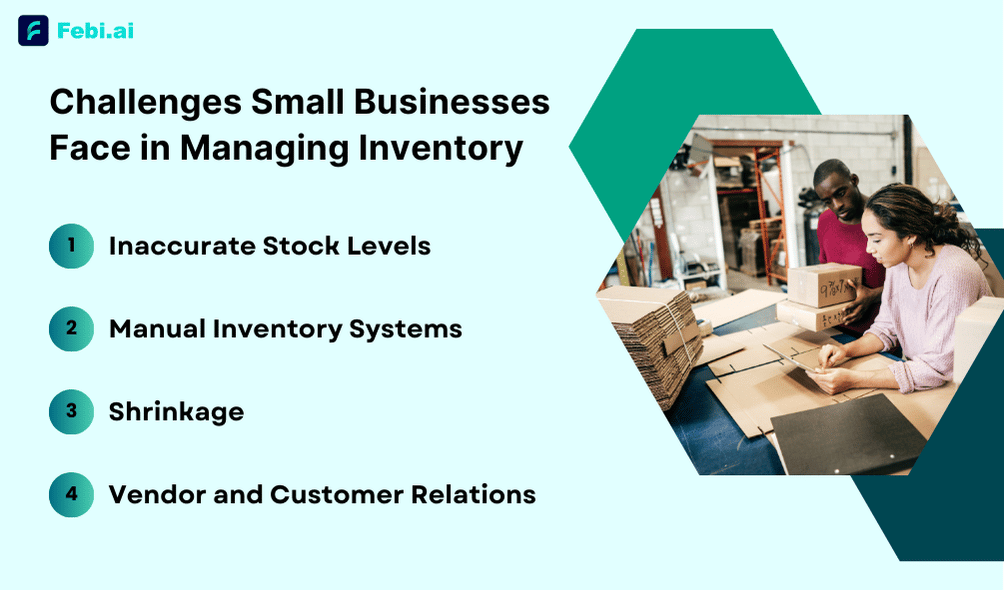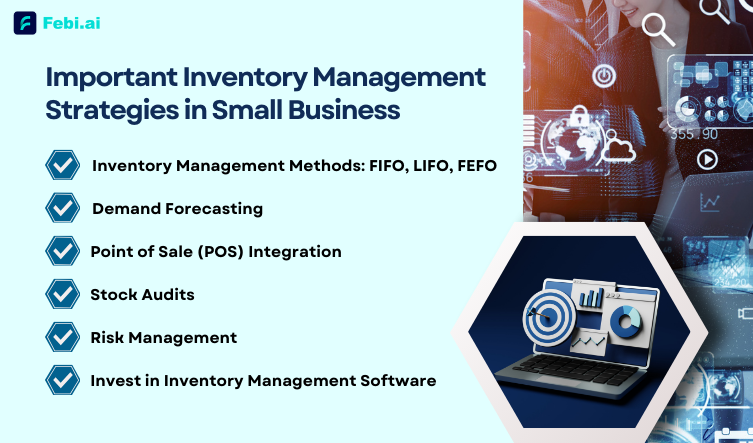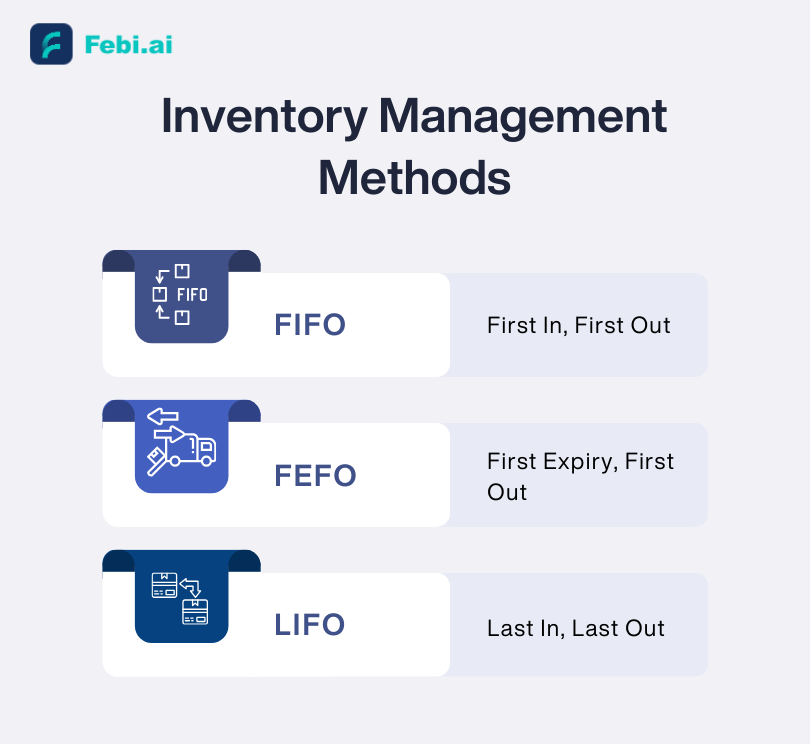Table of Contents
Imagine this: You’re a small or medium startup entrepreneur and your business is on the raise. Customers and clients are adding up everyday, your products are moving off the shelves. All of a sudden, an unexpected major issue hits your brand—a popular item is out of stock.
While this might seem like a basic hiccup, one mishap like this can lead to dissatisfied customers and clients, loss of revenue, and a direct hit to your reputation. Once you dig up the details, you understand that your inventory management system in place—or lack thereof—is to be blamed.
Today, several small to medium-sized businesses continue to use outdated methods. This includes using Excel workbooks and spreadsheets to even pen and paper for a few businesses to manage their inventory. The truth is that this works—until it does not. The real question is, how would you know when it is not working?
From missed reorders to excess stock hidden under piles of dust, inefficient inventory control can hurt a company’s cash flow, operational efficiency and customer or client satisfaction. As businesses scale, these issues only magnify, leaving entrepreneurs grappling with chaos. But how can you avoid this? Let’s delve into the common challenges faced and the effective strategies for managing inventory that can help small businesses avoid these pressing challenges.
Challenges Small Businesses Face in Managing Inventory
When it comes to small businesses, keeping stock can be a real headache. For most of these businesses, they have to manage stock in the old age ways. When this approach to stock management is employed, it is not unusual for the business to suffer from mistakes and inefficiencies.
Those strategies are ineffective because they do not have automated processes or up-to-date information, which most of the time result in stock levels being poorly managed. Here are some of the important issues that small scale enterprises encounter:

- Inaccurate Stock Levels: Without proper control over managing inventory information, one is likely to either overstock or understock the products. Excessive stock leads to high costs of storage, whereas too low stock can lead to loss of sales and unhappy customers. Both cases are disadvantageous to the business.
- Manual Inventory Systems: A number of companies still use inventory management excel spreadsheets incorporate, which are fallible. In the absence of up to the minute data relaying, the businesses cannot manage the demand that keeps changing and this results in misunderstanding accurate figures within the stock.
- Shrinkage: Such kind of losses can be attributed to theft, damage, or even spoiling. In the United States, for instance, the annual retail shrinkage was more than 61 billion dollars. In small firms, however, mutilation is a great threat to the profit levels.
- Vendor and Customer Relations: One of the fundamental elements for the smooth running of businesses is the supply chain and market. Poor inventory management affects both aspects greatly, particularly when businesses are unable to meet demand because of stockouts or a delay in delivery due to lack of products.
Let us, therefore, look at the solutions that may help small businesses in improving inventory management.
Important Strategies to Manage Inventory in Small Business

1. Inventory Management Methods: FIFO, LIFO, FEFO
Selecting appropriate inventory management techniques is a critical step in operating a lean organisation. Here is a synopsis of the applied techniques:
- FIFO (First-In, First-Out): FIFO management practices follow the principle that in any business, the first stock purchased is the first stock to be sold. For example, FIFO is useful for retail businesses, such as groceries, health and beauty products, and even pharmaceuticals, where the stock is at risk of expiring and becoming obsolete. Businesses incorporate the practice of moving out older stock to avoid wastage and to be able to maximise profits.
- LIFO (Last-In, First-Out): LIFO refers to the last or most recent stock that has been added to the inventory being the first to be sold. This approach is often found in volatile industries such as construction or oil and gas, where prices vary with time. LIFO also helps in minimising tax by reducing taxable income through the cost of goods sold in the financial statements. Nonetheless, it is less common with the small scale enterprises especially in India where the use of FIFO is a common norm.
- FEFO (First-Expired, First-Out): As evident from the name, this method of inventory management is about selling the item which has the nearest expiry date, a price cut must be imposed. This is very important for those businesses, which deal with perishable items so that the items are sold before they get rotten thus reducing wastage and maximising customer happiness.

When deciding on the most suited approach small businesses have to consider types of products as well as the market demand, especially when managing inventory.
2. Demand Forecasting
One of the most difficult aspects of inventory management for small scale companies is evaluating the customer demand. Whenever apportioning considerations of stock level, strategies of demand management, forecasting is the most useful tool and seeks to minimise the chances of either having a stock out or having too much stock. Through historical sales, looking at seasonality, and taking into account the changes in the market scope, such businesses do have a more reliable method of predicting the future in terms of demand.
If all steps are followed with the help of an inventory management system, i.e. all the factors that were supposed to be considered in forecasting are put in place and all comes into place. What it means is that stock is kept at optimum level and less cost is incurred in holding costs as enough stock for fast moving goods is maintained. This also allows for better timing of sales promotion campaigns, better management of cash reserves, and evasion of stock outs during seasons with high customer traffic.
3. Point of Sale (POS) Integration
For instance, being able to connect your POS with your inventory management system is beneficial as it enables managing inventory and the respective sales in real time. In this case, once the product is sold through the POS terminal, the system will deduct the inventory counts automatically ensuring that a prudent stock level is always maintained.
In addition, this integrated system helps the companies to know how their customers do purchases and when allowing better forecasting. Furthermore, the use of POS machines helps in reporting with respect to high movement products, low movement items, and their seasonality which assist in carrying out stock management better. Such a manageable level of inventory when implemented checking the stock levels ensures completely no stock outs or overstocks occurrence.
4. Stock Audits
Everyday operations for stock audits can help you maintain an accurate record of the business inventory. No matter if the audits are performed monthly, quarterly, or annually, the stock audits help in identifying discrepancies between the actual stock levels and what’s recorded in your system. Moreover, regular stock audits can uncover shrinkage, misplacement of goods, and other challenges that may go unnoticed without detailed checks.
Other than finding the issues early on, stock audits offer a golden chance to optimise warehouse organisation. Small businesses can manage their stock levels to improve picking efficiency, lower the probability of errors, and minimise stock handling time. This boosts overall operational efficiency, reduces shrinkage, and ensures accurate stock counts.
5. Risk Management
In the course of managing inventory, multiple risks are unavoidable, although they can be addressed through a proper risk management plan. Organisations ought to expect these unpredictable events; any shock in the supply chain, lack of stock, or even changes in demand trends in the market. Introducing contingency strategies ahead of busy seasons or delays in the supply chain ensures that one is able to adjust within the shortest time possible and no customers are lost.

Moreover, taking out an insurance policy for valuable stock, moving towards multiple suppliers and having some buffer stock are other ways of helping to avoid risks. In a nutshell, one can say effective management of inventory means being dynamic as well as being ready for the likelihood of the occurrence of anything.
6. Invest in Inventory Management Software
As your business grows, so do the manual systems for inventory management such as Excel worksheets become inefficient. To stay competitive, small businesses must consider investing in automated inventory management systems that not only give access to real-time data, but also automates reorders, and creates actionable insights. These can be a strong basis for your data-backed planning and decision-making.
Febi.ai offers a comprehensive and automated inventory management system that integrates seamlessly with existing platforms. It automates purchase orders, conducts demand forecasting, and provides real-time updates on stock levels. By implementing an automated solution such as Febi, companies that have stock management operations can reduce the probability of human error, improve inventory accuracy, and save time for more strategic and productive tasks. Whether you manage a small retail shop or a growing startup, using an automated inventory management system can go a long way in helping you streamline operations.
Conclusion
Inventory management is a critical aspect of running a successful small business. By adopting effective strategies — from choosing the right inventory management method to investing in automated inventory management systems — businesses can optimise their stock levels, minimise costs, and keep customers happy. With accurate demand forecasting, regular stock audits, and integrated POS systems, small businesses can maintain better control over their inventory and position themselves for long-term success.
So, are you ready to take your inventory control to the next level and safeguard your business against stock mismanagement?










